Quick Reference
Prior to 1940, possibly 1938-'39
Adamsville Road, Heath, MA
looking Southeast
Oil on Canvas
Landscape
Roads & Streets, Sugaring
24" X 36"
Unknown, not likely
Given as a gift to family
NA
Related Links
- See also the...
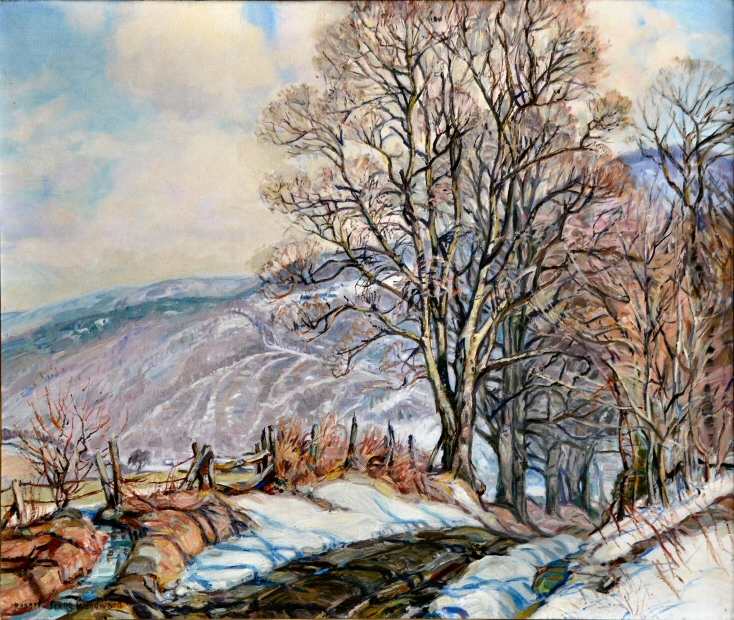 Roads & Streets Gallery to view related pieces.
Roads & Streets Gallery to view related pieces.
- See also the...
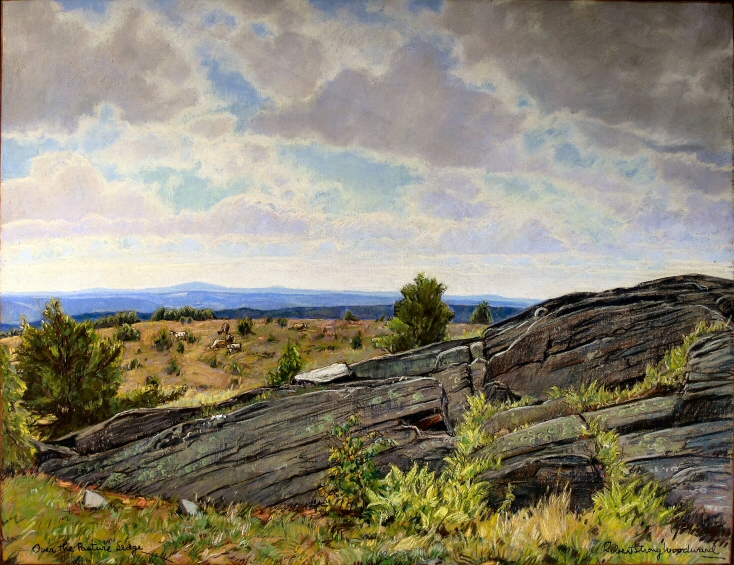 Rocks & Stone Walls Gallery to view related pieces.
Rocks & Stone Walls Gallery to view related pieces.
- See also the...
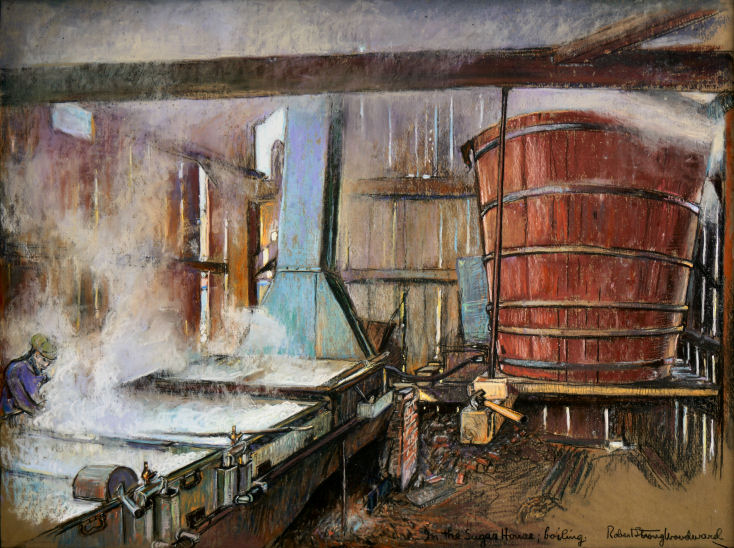 Sugaring Gallery to view related pieces.
Sugaring Gallery to view related pieces.
- See also the...
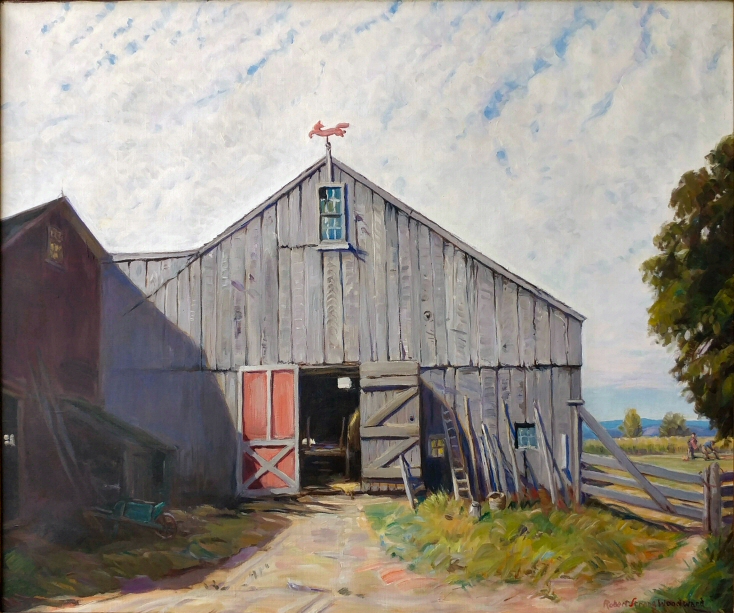 Fences, Gates & Doors Gallery to view related pieces.
Fences, Gates & Doors Gallery to view related pieces.
- See also the...
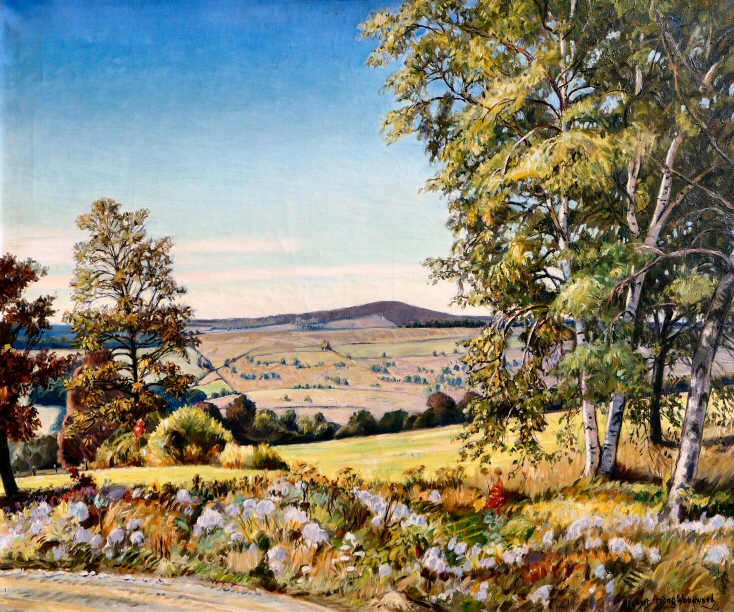 Landscapes & Views Gallery to view related pieces.
Landscapes & Views Gallery to view related pieces.
- See also the...
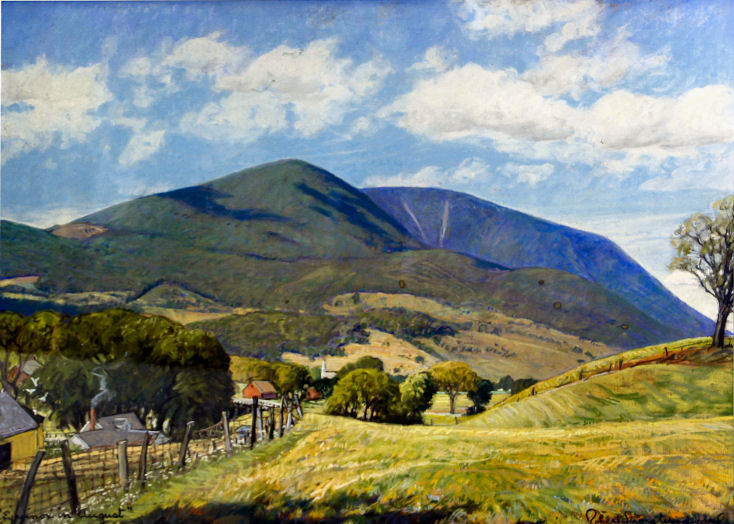 Mountains Gallery to view related pieces.
Mountains Gallery to view related pieces.
Featured Artwork: Unnamed: A Hill Road in Heath
RSW's Diary Comments
 There are no diary entries for this unnamed and unsigned painting.
There are no diary entries for this unnamed and unsigned painting.
Diary Comments for A Hill Road:
"Painted summer of 1946. Painted up at North Heath at the head of the N. Heath-Adamsville Road. Three simple elements, dirt road, tree group, wooded mountains in powerful simplicity - all pinned together by a red-roofed sugar house all under a 'cloud and blue' August sky. I think a fine canvas. The one 'free' summer painting I made in the Packard with Mark, his summer of 1946 when I hoped to paint a dozen. Made in 3 afternoons at the place, while Mark studied or read. Sold Sept 1st, 1947, from Manchester, Vt. Exhibition to Mrs. P.H.B. Frelinghuysen of Morristown, N. J. and given to her young grandson to be taken out to his new home in Arizona."
Editor's Note:
Woodward makes no mention of previously painting this scene, however, noting the differences in style and brush technique, we are certain the painting above was made perhaps as much as a decade earlier. Side by side comparisons reveal their differences quite sharply. SEE MORE BELOW
Additional Notes

 The road freshly paved when we visited in 2019.
The road freshly paved when we visited in 2019.
The sugarhouse is still standing and is now on the
Crowningshield Conservation Area property in Heath.
Noting the differences with A Hill Road:
 First and foremost, not only is the perspective of
the aspect ratio vastly different (much more rectangular), but Woodward placed himself farther from the tree group
and sugarhouse in the above painting. Note the sharp triangular stone protruding from the ground in each painting.
First and foremost, not only is the perspective of
the aspect ratio vastly different (much more rectangular), but Woodward placed himself farther from the tree group
and sugarhouse in the above painting. Note the sharp triangular stone protruding from the ground in each painting.
 There are a number of differences in regard to the
right side of the road. The painting above has more stones and rocks then the latter painting. The lighting on the
fence is very different and there is a shadow cast on the road from an unseen tree that does not appear in the 1946
painting.
There are a number of differences in regard to the
right side of the road. The painting above has more stones and rocks then the latter painting. The lighting on the
fence is very different and there is a shadow cast on the road from an unseen tree that does not appear in the 1946
painting.
 The are also much different color temperatures
between the two paintings. The painting above is cooler light with hazier tones. It is in the mid-afternoon by
the shadow cast we see in the painting above being similar to the photograph we took (to the left) on our visit one
afternoon. A Hill Road is much warmer and richer in color and appears to be much closer to noon or shortly
before it.
The are also much different color temperatures
between the two paintings. The painting above is cooler light with hazier tones. It is in the mid-afternoon by
the shadow cast we see in the painting above being similar to the photograph we took (to the left) on our visit one
afternoon. A Hill Road is much warmer and richer in color and appears to be much closer to noon or shortly
before it.

 A picture of the sugarhouse today. Its roof
A picture of the sugarhouse today. Its roof
is still intact but no longer has but a small sheet
of what is probably tar paper that remains.
 As far as the brush style and technique, the painting
above has a heavier application more typical of the 1930s. We are being conservative in our determination it was
made in the late 1930s. What we see in certain locations on the canvas indicate it could be as early as 1930.
Especially brush strokes of the hills in the distance above the sugarhouse.
As far as the brush style and technique, the painting
above has a heavier application more typical of the 1930s. We are being conservative in our determination it was
made in the late 1930s. What we see in certain locations on the canvas indicate it could be as early as 1930.
Especially brush strokes of the hills in the distance above the sugarhouse.
Yet still, it is not unusual
for Woodward to go back and forth between styles as he is transitioning from one to another. We see this sort of
interval quite a bit between 1927 and 1933 as he is getting away from a textured impasto surface. The problem with
textured surfaces is that it is distracting to the viewer and the artist valued pellucid clarity above all else, so
by the 1940s to his retirement. His paintings become increasingly smoother and more subtly blended. Just note the
difference in the application of paint on the roof of the sugarhouse to see what we mean.

 The example of RSW altering his professional
The example of RSW altering his professional
signature for a gift given to Dr. Mark's for his new place
in Boston, by excluding "Strong" with a simple "S".
The painting above is wonderful and has many terrific qualities. We are not criticizing it by any means but it
also is an excellent example of Woodward's process. There was something about the painting above that did not fully
satisfy him. Not at all uncommon, Dr. Mark has told us that at any given time the
artist could have as many as 180 paintings in his storage area in various states of unfinished or incomplete-ness...
none of which were signed or named.
If he kept them, he saw some promise even if he couldn't resolve the
issue that left him unfulfilled. And some of these paintings could sit in his storage for as much as two decades!
If he liked it enough but couldn't change it, he would gift it to someone close to him, especially family. That is
the case with this painting. It was given to his cousin Nelson, as is, unsigned and unnamed. This was an unyielding
practice of Woodward's. He would not sign anything that did not meet his professional standard, not even for family
or loved ones such as Dr. Mark. The primary reason was because he did not want anyone profiting from what was
clearly a gift not intended to be sold. Dr. Mark did not know this policy when he asked Woodward to sign a painting
he gave him as a gift for his and Barbara's new apartment in Boston. Woodward signed it... Robert S. Woodward, sans
his professional trademark "Strong."
To Nelson's credit, he did not sell the painting but gifted it to a
friend, a nurse, and we wonder if it was a thank you from Woodward for some sort of kindness. We do not know the
reason Nelson gifted the painting, especially knowing he did it BEFORE Woodward's death in 1957 suggest the nurse
might have possibly came to the rescue under adverse circumstances and the gift was thanks for her help.


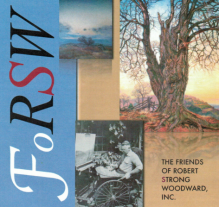
734.png)
